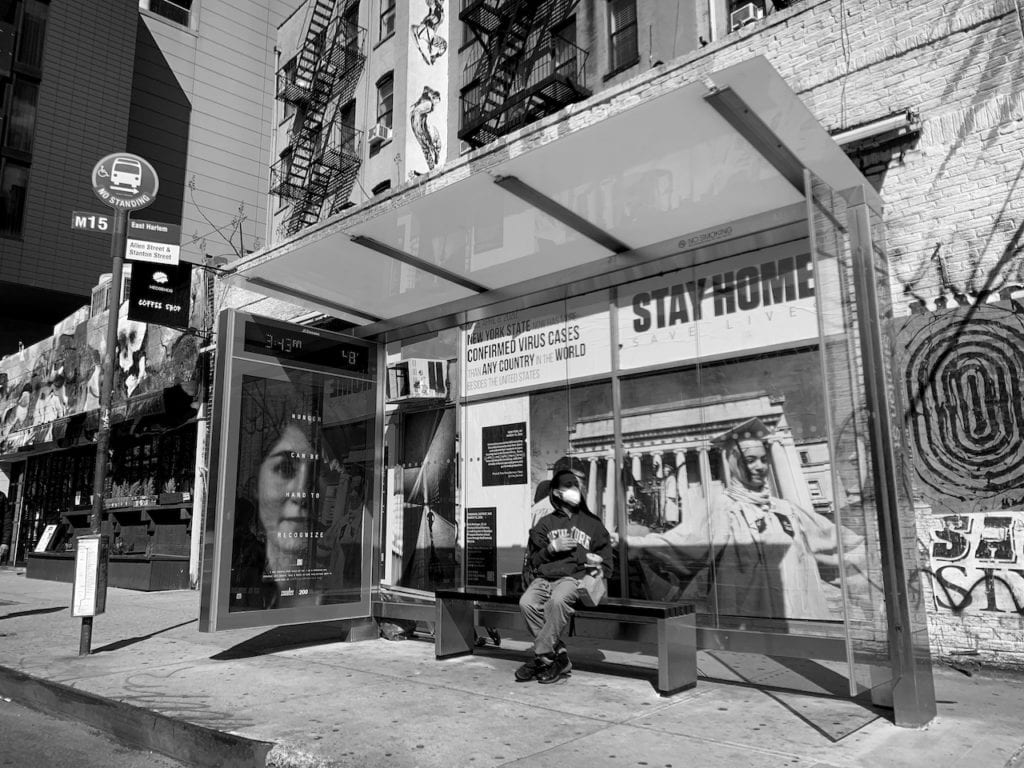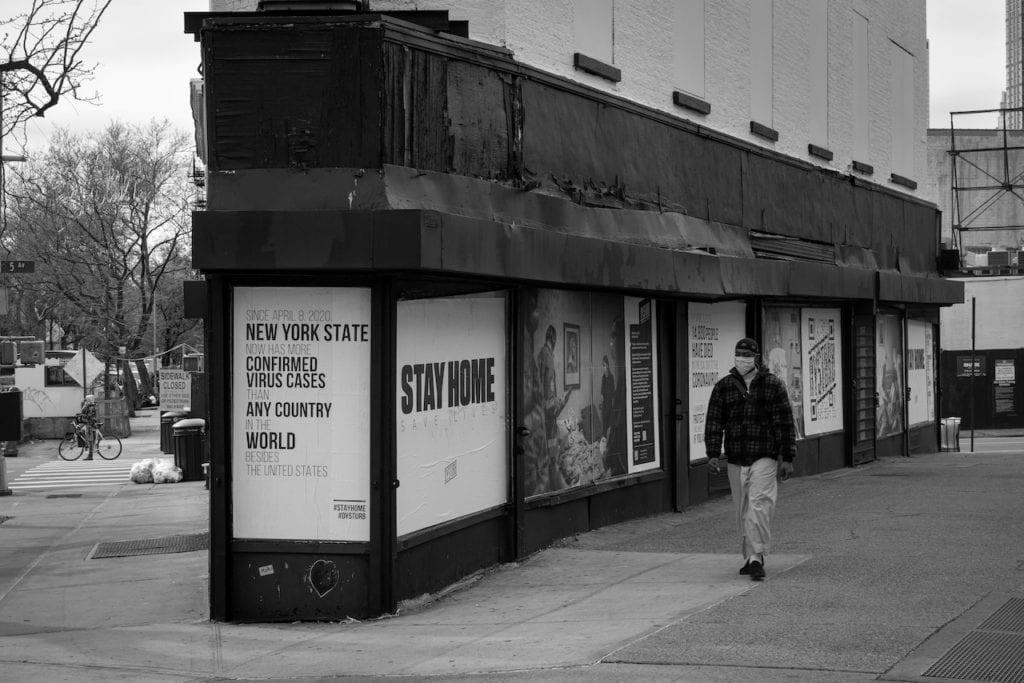“Photojournalism is a universal language that has the power to demolish stereotypes to inform,” says Benjamin Petit, photojournalist and co-founder of Dysturb, an initiative that designs immersive news and photojournalism campaigns for public spaces. Launched in 2014 by a group of photojournalists and writers in Paris and New York, Dysturb has worked to raise awareness of global issues including the climate crisis, violence against women, and migration. Now, they are tackling the largest public health crisis in living memory: Covid-19.
Dysturb has already initiated activations in Paris and New York, presenting global stories by photographers including Ashley Gilbertson and Nichole Sobecki from VII, and Nina Berman from Noor, alongside infographics that address key public health messages. In collaboration with CatchLight and The Everyday Projects, the initiative is seeking to further their global activations, launching Artists against an #Infodemic — an open call inviting artists to submit their work, for which they will be offered $500 per visual selected.
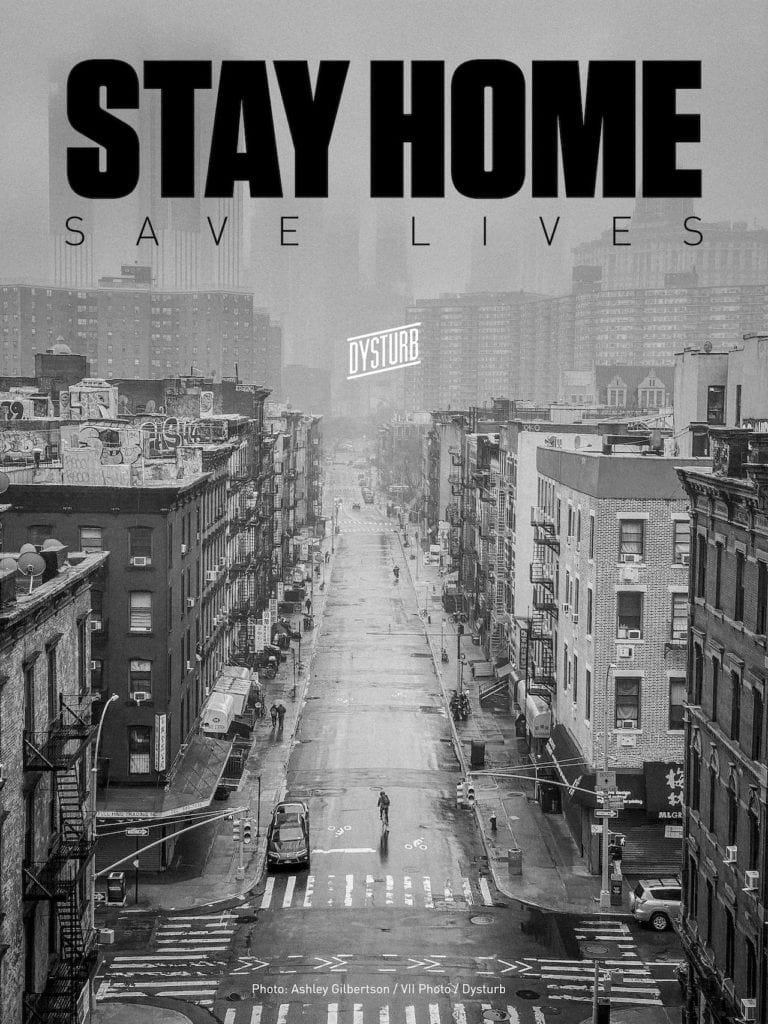
“We are constantly invaded by headlines and images, but to have these unexpected experiences in public spaces, in such a size, is powerful”
Benjamin Petit, co-founder of Dysturb
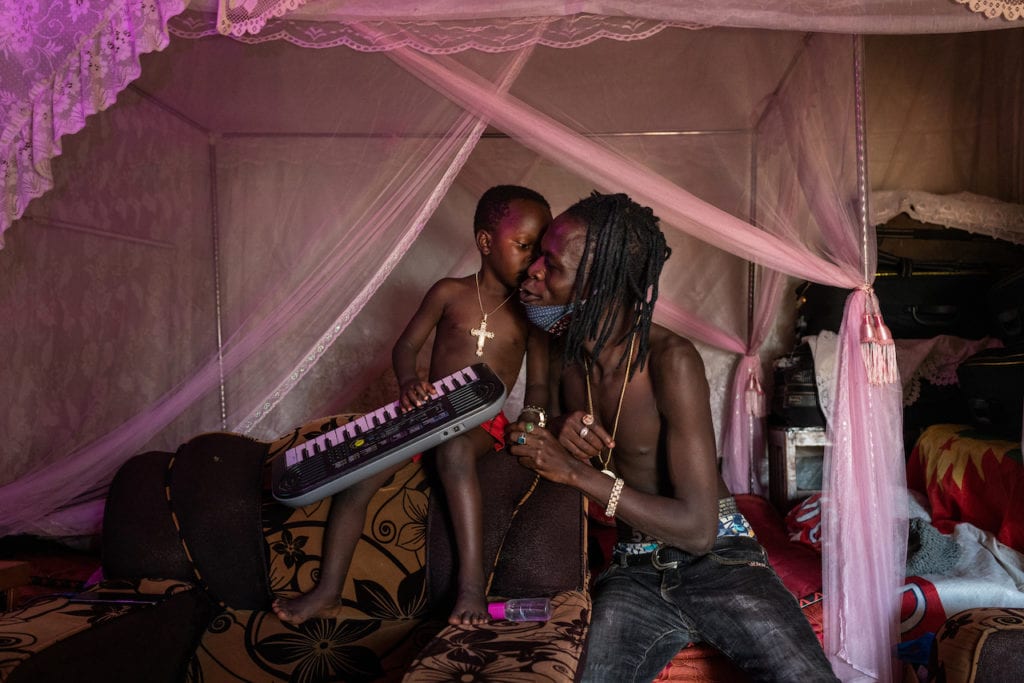
Almost five months since the first official report of a coronavirus death in Wuhan, China, the virus has overwhelmed Western headlines, dominating not just the news cycle, but also the lives of a third of the world’s population, who are currently living with some form of social restrictions.
New York has been on lockdown for six weeks, but although Manhattan’s streets are scarce of commuters and traffic, according to Petit, the streets of Brooklyn are still busy, and on a sunny day, its parks fill with sunbathers. The situation is similar in European cities such as London and Berlin, where the cities’ youth in particular have been called out for irresponsible behaviour.
This is exactly the demographic that Dysturb is seeking to appeal to. Most of the core team have been working in the industry for many years, and during workshops, they have been astonished by how many young people do not read the news or print media. “We wanted to find a way to reconnect with a population that doesn’t necessarily read, listen to, or watch the news” Petit explains.
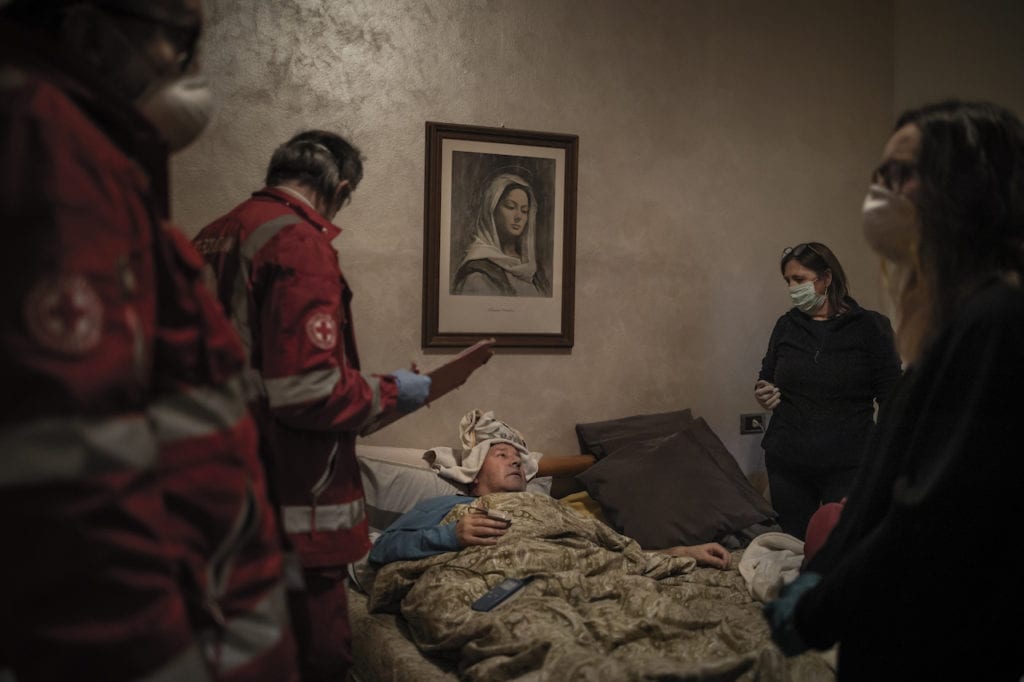
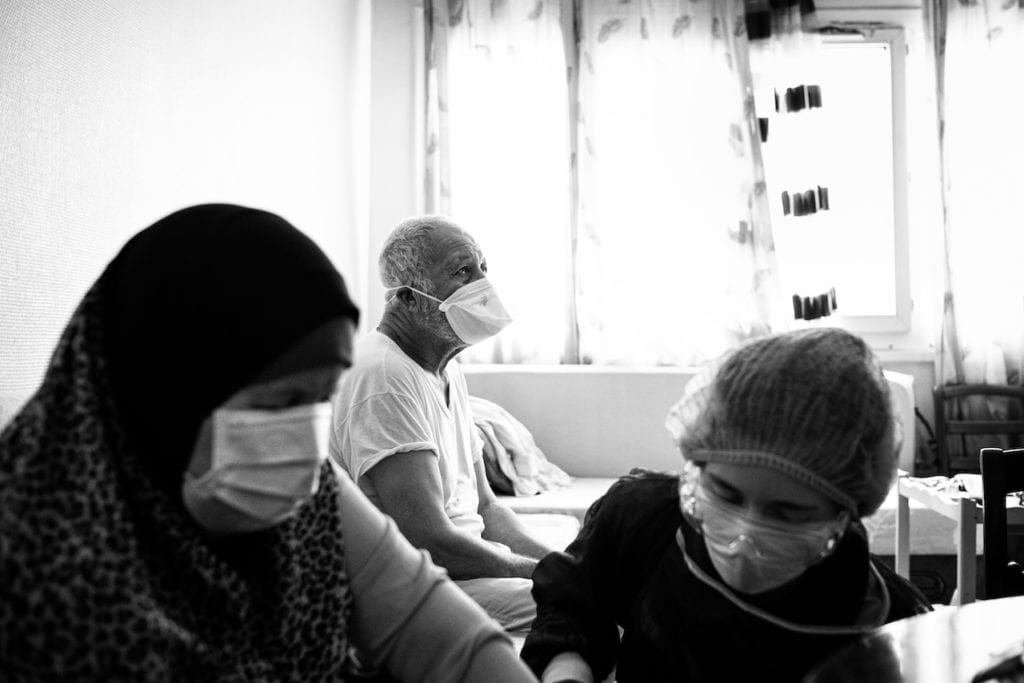
According to a study by Oxford University and Reuters, younger people are increasingly finding news through social networks and online media — a breeding ground for fake news. So it is increasingly important that people are receiving accurate information, and as many countries approach a period of “isolation exhaustion”, Dysturb wants people to engage people with this information in a new and offbeat way.
“Displaying images in public spaces triggers an immediate response,” Petit explains. “We are constantly invaded by headlines and images, but to have these unexpected experiences in public spaces, in such a size, is powerful. I think people have a craving for physical actions like this.”
Artists can submit their work to Artists against an #Infodemic here.
—
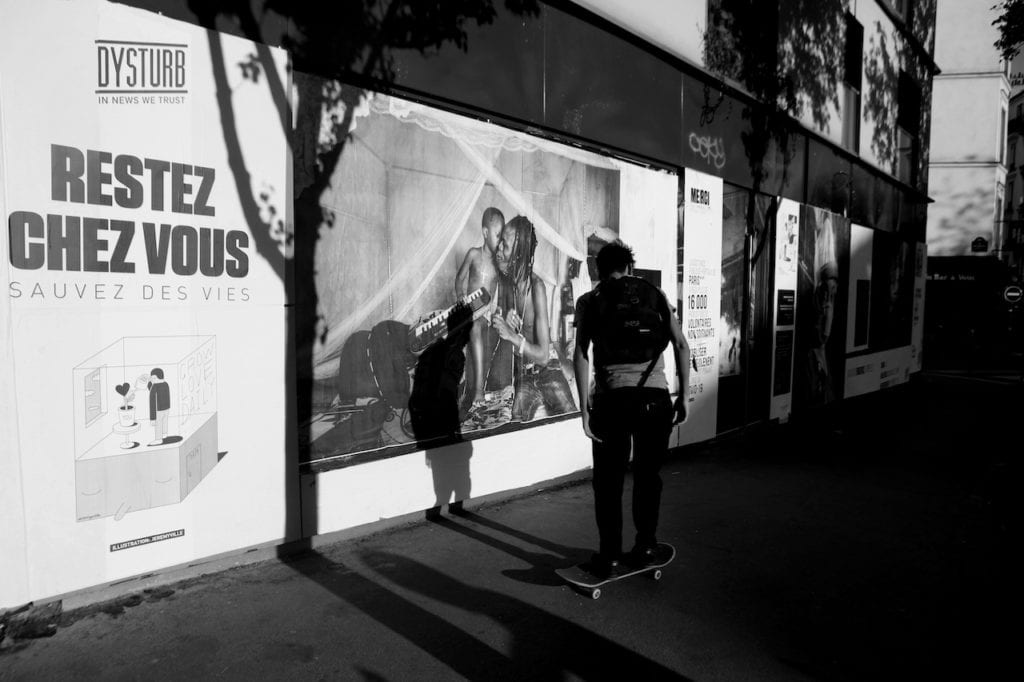
—

